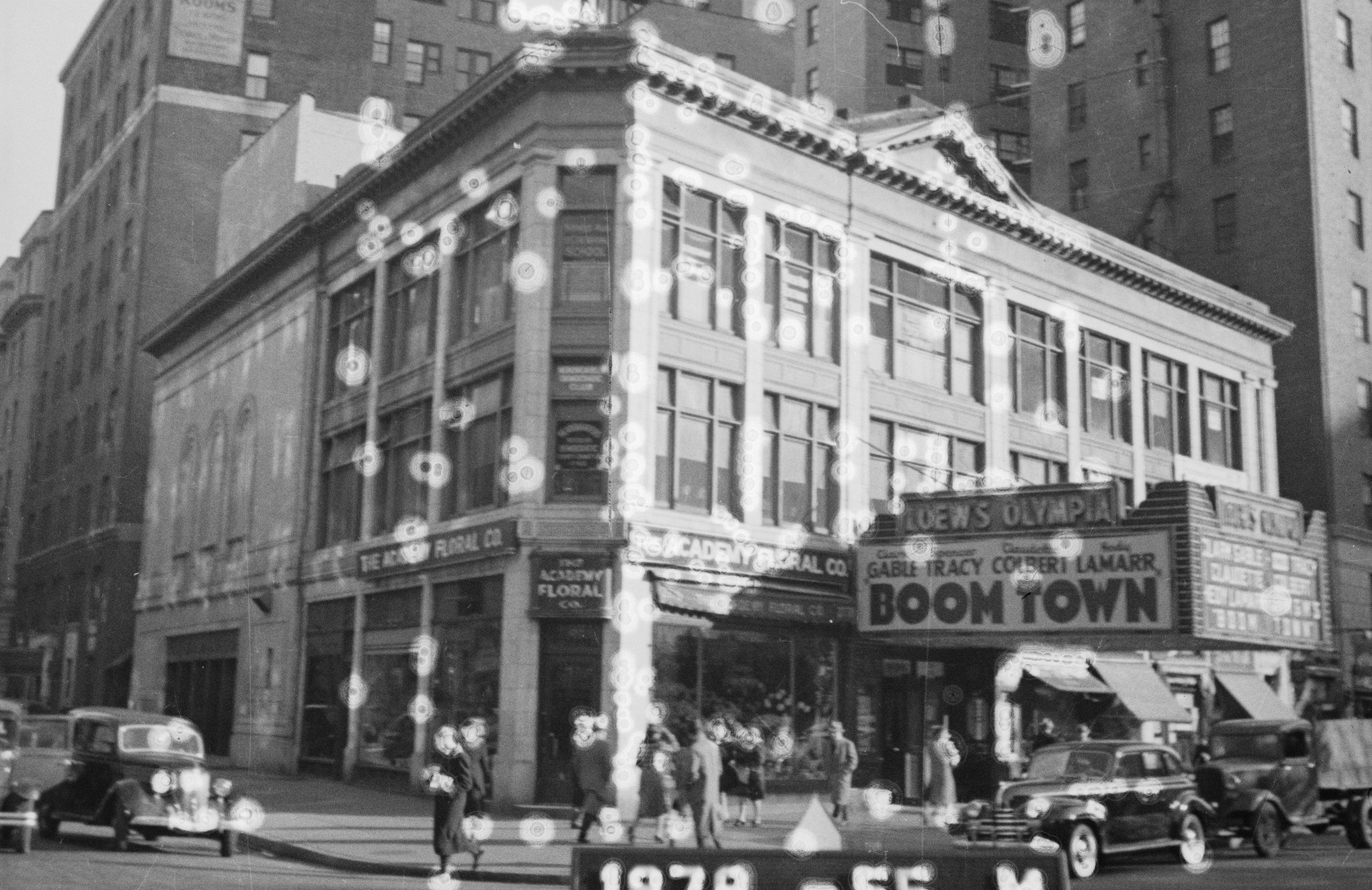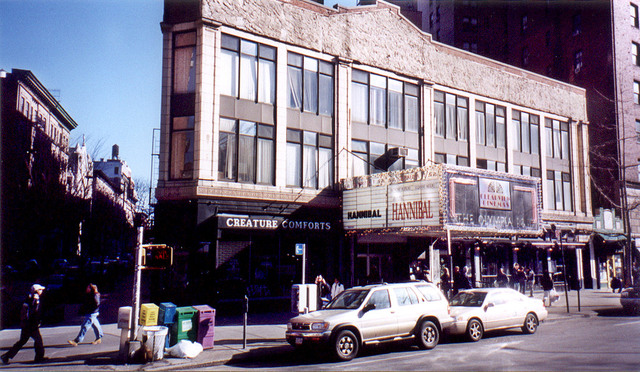
The Olympia Theater
by Tom Miller
In the second decade of the 20th century, theaters were being built specifically to screen photo plays, known today as motion pictures. In 1913 the Upper West Side was about to get another one. On October 5, the American Stone Trade reported that the Aetna Amusement Corporation had hired architect V. Hugo Koebler to design a “brick, limestone and terra cotta theatre” at the southeast corner of Broadway and 107th Street. Construction costs were projected at 4.5 million in 2023 dollars.
Koebler’s three-story structure looked more like a business building than a theater. A mix of Arts & Crafts and Renaissance Revival styles, its chamfered corner provided extra light to the upper floors and a store entrance to the ground floor retail space store. Chicago windows flooded the upper floors with natural light, and a rather diminutive triangular pediment perched atop the cornice.
The ground floor store was leased to C. C. Trepel’s florist shop, and the second floor became the dance school of E. Fletcher Hallamore. In August 1914 he touted that the Fox Trot could be learned in one lesson for one dollar.
The aggressive, electrically lit canopy-sign left no question that this was, indeed, a movie theater.
The commercial appearance of the building may have prompted owner J. W. Brandon to make an update in 1920. In March he hired architect James P. Whiskeman to install a new marquee. The aggressive, electrically lit canopy-sign left no question that this was, indeed, a movie theater.
In 1932 the Therese Aub Secretarial School moved into one of the upper floors. It would remain at least through 1948, offering day and evening courses in subjects like the Gregg and Pitman systems of shorthand.
There were an estimated 1,050 patrons in the Olympic Theatre on Saturday night, June 9, 1934. Shortly after 9:00 some of them smelled smoke. Employees traced it to the basement where a short in the refrigerating machinery had started a small fire, which they quickly extinguished. The thick smoke, however, wafted into the auditorium. Harry Coppinzer, the manager, went onto the stage and assured everyone that the fire was not serious and there would be no interruption in the program. But when he ordered the side doors opened to let the smoke out, about 150 nervous people left. Rather remarkably, 900 remained in their seats. The New York Times reported “A crowd of about 200 gathered outside when rumors of a fire began to spread through the neighborhood.” Eventually, those who had left returned, and the movie was continued.
In 1939 Loew’s Theatres, incorporated in Cincinnati, Ohio in 1904, purchased the building. Loew’s operated it until 1956, when it leased the Olympia to a group called Interboro. Their renovations included painting the marble baseboards and dados black and the walls blue and pink. The group screened only Spanish-language films.
Change came again in 1971 when the Upper West Cinema Corporation leased the building. Its remodeling extended the theater into the second floor and brought back the marble and other elements. New York Magazine noted on July 26 that year, “blue mosaics surround the water fountain, and the fire hose sits behind a stained-glass window.” The article noted, “Zabar’s will run a refreshment stand in the lobby, selling dried fruits, nuts, sunflower seeds, halvah, yogurt and tiny salamis.” It said that on the second floor would be “a fruit juice bar, an art gallery and space for poetry readings and folk concerts.”
“Zabar’s will run a refreshment stand in the lobby, selling dried fruits, nuts, sunflower seeds, halvah, yogurt and tiny salamis.”
Starting around 1979 the Rheedlen Foundation operated from the top floor. The organization assisted truants under the age of 12, obtaining mental care for some and finding the root of the truancy, which sometimes involved child abuse. On July 25, 1979, The New York Times said that in the foundation’s offices children “paint and play with puppets, and learn such intangible things as how to respect authority and the value of knowing how to read. Gradually they are assigned to private tutorials on a regular basis in reading, mathematics, and science.”
On April 17, 1998, The New York Times reported that Loews Theaters intended to sell 14 movie theaters in Manhattan. Among them was the Olympia. The motion picture house limped along until December 2002 when, according to Denny Lee of The New York Times nine months later, it “went dark and was obliterated.” Lee said moviegoers “have been monitoring the pit ever since, wondering if another Olympia would make an appearance.” One would not.
In September 2003 the Clarett Group announced plans for a 20-story residential building on the site. The replacement building was completed in 2007.
Tom Miller is a social historian and blogger at daytoninmanhattan.blogspot.com
BUILDING DATABASE
Keep Exploring
Be a part of history!
Think Local First to support the businesses currently at 2770 Broadway:
Meet Randy Gerner!



